A new study by an international team of scientists has concluded that aquifer depletion is affecting countries around the world and can threaten both the stability of local ecosystems and water security, with groundwater pumping causing the entire planet to tilt. Also, an international team of hydrologists and climatologists comprehensively studied the fresh water cycle on Earth and came to the conclusion that in 18% of the planet’s regions, the circulation of fresh water between rivers, ponds, lakes, other bodies of water and other environments has been significantly disrupted as a result of human activity.
The analysis shows that strong deviations in the nature of water movement through reservoirs and soil began to occur in the last century and a half much more often and in a greater number of regions than in the pre-industrial era. This suggests that humanity is actively disrupting the global freshwater cycle.
Scientists came to this conclusion during a comprehensive analysis of how the pattern of fresh water movement through soils and reservoirs in all regions of the world changed between the mid-17th century and the beginning of this century. This period of time covers both the pre-industrial era (1661–1860) and the modern era (1861–2005), during which the appearance of the planet in many of its regions changed radically, including as a result of the construction of hydroelectric power stations, dams and other hydraulic structures.
Scientists studied the impact of these changes on the water cycle on Earth, for which they prepared a detailed model of the planet’s hydrosphere and used it to calculate how the movement of fresh water flows in soil and reservoirs changed with very high spatial resolution. To do this, scientists divided the entire land into squares with an area of 50 by 50 km and monitored how the level of soil moisture changed, the volume of water flowing through rivers, lakes and other bodies of water, as well as other hydrological parameters.
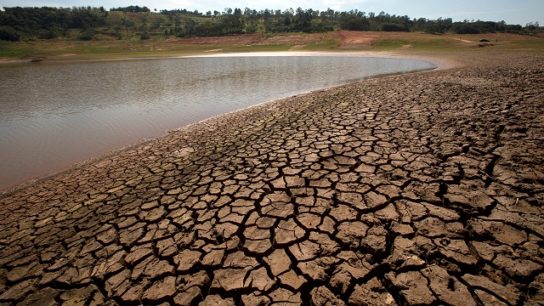
These calculations showed that various hydrological anomalies, including droughts, floods and other deviations from the typical volume of moisture in soil or reservoirs, monthly and annually covered approximately 9.4–9.8% of the total land area in the pre-industrial era. Over the next 1.5 centuries, this figure actually doubled – now such anomalies constantly cover about 18% of water bodies and 15% of soils, which scientists primarily associate with human economic activity.
A larger number of such regions were concentrated in the tropical regions of South America and Africa, as well as in the central regions of the United States and Mexico, southern Europe and China, as well as in India and the Middle East. In Russia, these anomalies are most pronounced in the northern regions of the country, which is associated both with global warming and with increased human activity in the last half century. Understanding this, scientists hope, will help humanity better prepare for subsequent changes in the freshwater cycle throughout the Earth as a whole.
In Alaska, rivers and streams turn orange and acidic. As My Planet writes, the Kobuk River, with a length of just over 450 kilometers, became the rustiest. For several years, scientists have recorded that the reservoir and its tributaries are becoming increasingly orange. In orange rivers, they found a high concentration of iron and an insufficient amount of dissolved oxygen. In addition, the water in such reservoirs is acidic.
In some rivers the pH reaches 3.5. And it’s more sour than orange juice. The exact reason for the increase in the concentration of iron-containing minerals is not yet known. However, scientists are convinced that rising temperatures and thawing permafrost are to blame. This awakened many processes that had been inhibited for five thousand years.
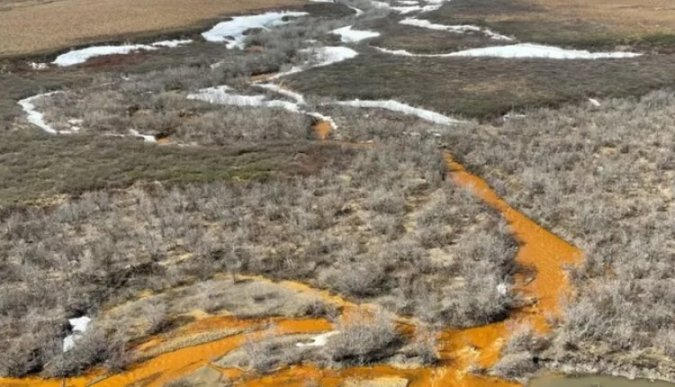
According to one version, the thawing of permafrost released iron located in frozen soils. Experts note that the Arctic, including northern Alaska, is warming four times faster than other areas of the world. Another version is that the thawing of permafrost led to the appearance of bacteria and the restoration of oxidized iron in the soils. When groundwater carries the iron into the oxygenated stream, it oxidizes again and turns a bright orange color.
Groundwater depletion
When rain, melted ice and snow seep into the soil, they accumulate in large underground aquifers that provide fresh water for drinking, agriculture, industry and even energy production. Groundwater is vital to humanity’s survival on the planet as it provides 99 percent of all liquid fresh water on Earth, and an estimated 2.5 billion people rely on these systems for survival.
Despite its importance, measuring people’s impact on aquifers and mobilizing support for their protection can be challenging due to their confined and underground nature. But a new study published in the journal Nature raises global alarm about protecting these resources, while also citing examples of policy changes and other practices that have helped restore previously depleted groundwater aquifers.
In the study, scientists from University College London, University of California Santa Barbara and ETH Zürich measured groundwater collected from 170,000 wells in 1,700 aquifer systems. This is the first global view of groundwater levels based on ground data, the researchers say, providing a level of detail that cannot be achieved using satellite or computer models alone. While their findings are mostly bad news, there is some good news.
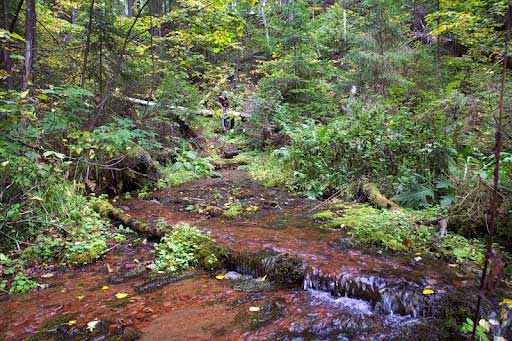
“The study found that groundwater levels are declining by more than 10 cm per year in 36% of monitored aquifer systems,” the researchers said in a UCL press statement. “It also reported rapid declines of more than 50 cm per year in 12% of aquifer systems, with the most severe declines occurring in croplands in dry climates.”
That’s consistent with a New York Times report last year that found that of the 80,000 groundwater wells in the U.S., 40 percent had reached record lows over the past decade. As the report also highlights, the hardest hit states are Arizona, which is even restricting new construction due to water issues. Other non-Western states have also shown signs of groundwater depletion.
A new study has found sharp declines in groundwater levels in Iran, Chile, Mexico and the United States and warns that drained aquifers could lead to seawater intrusion and land subsidence (subsidence). It can also affect the natural function of wetlands and rivers, and previous studies have even shown that groundwater pumping causes the entire planet to tilt.
But in a rare moment (especially when it comes to climate change), the study also brings good news, reporting that the future of completely depleted aquifers is far from a foregone conclusion. The researchers note that aquifers in Thailand, Spain and even parts of the United States that showed signs of decline in the 1980s and 1990s have recovered thanks to improved regulation and other methods of water restoration such as interbasin redistribution.
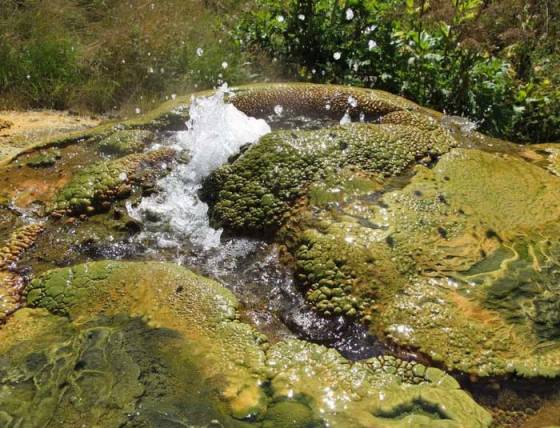
Although hidden beneath the Earth’s surface, groundwater is finally getting the attention it deserves, and evidence shows that smart management can help preserve these life-sustaining aquifers for future generations.
Mexico City, a sprawling metropolis of nearly 22 million people and one of the world’s largest cities, already faces a serious water crisis as a complex of problems including geography, chaotic urban development and leaky infrastructure are compounded by the effects of climate change.
Years of abnormally low rainfall, longer dry spells and high temperatures have added pressure to a water supply already struggling to cope with increased demand. Authorities were forced to impose significant restrictions on water pumped from reservoirs. Politicians have played down any sense of crisis, but some experts say the situation has now reached such critical levels that Mexico City could face a “Day Zero” within the next few months, with large swaths of the city running out of water.
Densely populated Mexico City sits on a high-altitude lake bed, approximately a little over 2,220 meters above sea level. It was built on clay-rich soil, which it is now sinking into, and is prone to earthquakes and highly vulnerable to climate change. Perhaps today this is one of the last places that anyone would choose to build a metropolis.
The Aztecs chose this site to build their city of Tenochtitlan in 1325, when it was a series of lakes. They were built on the island, expanding the city in breadth, constructing networks of canals and bridges to handle water. But when the Spanish arrived in the early 16th century, they destroyed much of the city, drained the lake bed, filled in the canals, and cut down the forests. Their actions paved the way for many of Mexico City’s modern problems. Wetlands and rivers have been replaced with concrete and asphalt. During the rainy season there are floods and during the dry season it dries out.
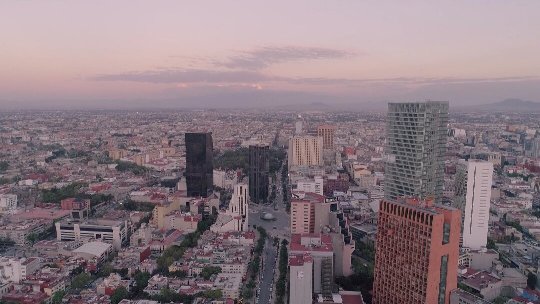
About 60% of Mexico City’s water comes from an underground aquifer, but its extraction has been so excessive that recent research suggests the city is sinking at an alarming rate of about half a meter per year. And the aquifer is not replenishing fast enough. Rainwater rolls off the hard, impermeable surfaces of the city instead of seeping into the ground. The rest of the city’s water is pumped vast distances uphill from sources outside the city, an incredibly inefficient process in which about 40% of the water is lost to leaks.
The Cutzamala Water System, a network of reservoirs, pumping stations, canals and tunnels, provides about 25% of the water used in the Valley of Mexico, which includes Mexico City. But a severe drought took its toll. Currently at approximately 39% capacity, it is at an all-time low.
Natural climate variability greatly affects this part of Mexico. Three years of La Niña brought drought to the region, and then the arrival of El Niño last year led to a painfully short rainy season that failed to replenish water supplies in reservoirs. But the long-term trend of human-caused global warming continues to fuel longer droughts and stronger heat waves, as well as heavier rains when they do come.
As reported by CNN, the water crisis has sparked fierce debate over whether the city will reach “Day Zero,” when water levels in the Cootzamala system drop so low that it cannot supply water to the city’s residents. In early February, local media widely reported that an official from the Conagua branch had said that without significant precipitation, a “zero day” could occur as early as the summer. And although city officials have denied the report, many experts warn of a growing crisis. Mexico City may run out of water before the rainy season arrives.




